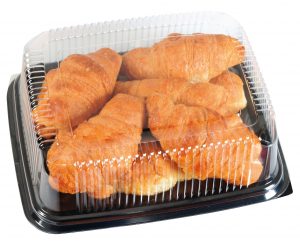 Growing demand by consumers and governments to turn waste into new products has driven Colour Tone Masterbatch to create scanner-sensitive tones that make sorting and recycling as easy as the flick or click of a switch. It involved taking near-infrared technology one step beyond.
Growing demand by consumers and governments to turn waste into new products has driven Colour Tone Masterbatch to create scanner-sensitive tones that make sorting and recycling as easy as the flick or click of a switch. It involved taking near-infrared technology one step beyond.
“We focussed on solving the major limitation with near-infrared (NIR) – how to effectively recognise black and coloured PVCu plastic food tubs, trays and films that absorb infrared?,”says Tony Gaukroger, Director of the UK-based Colour Tone Masterbatch and joint-creator of the material.
“We combined our previously patented Vynacol Masterbatch with new developments in pigmentation. This enabled us to develop a novel colourant technology, one that was able to address the problem of how to prevent IR absorption when sorting mixed plastic, post-consumer waste using automatic NIR sorting techniques.”
Colour Tone is now producing a next generation of Masterbatch that offers the high performance qualities for other coloured packaging (green, blue, brown) items that also feature carbon black and other pigments can satisfy aesthetic and sustainability needs.
“That’s why we’re confident of being able to replace carbon black with NIR black in any colour to make it suitable for sorting, and that this doesn’t necessarily lead to a dramatic increase in the cost of the formulation either,” Gaukroger says.
In the UK, the waste charity Recoup has been tasked with agreeing a roadmap for the sustainable recycling of black plastics with a deadline of this year.
“Our proven technology is one solution under consideration, while public concern as to how we handle this waste continues to heighten,” Gaukroger says.
